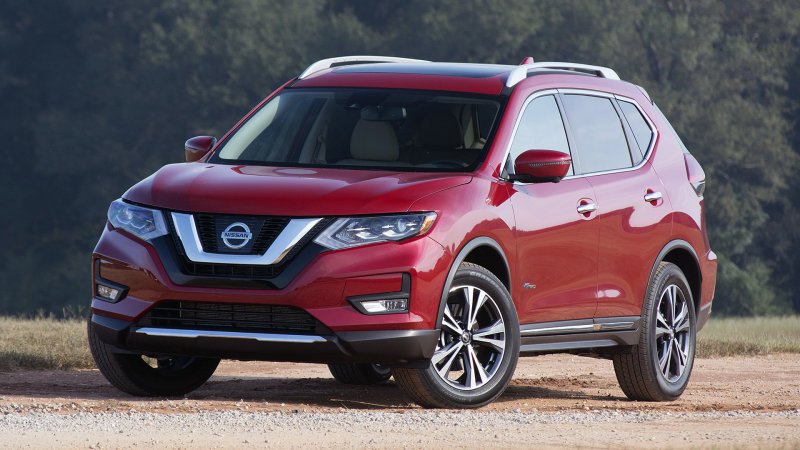Bridges, railroad tracks can trigger Nissan Rogue's automatic emergency braking system

The automatic emergency braking (AEB) system fitted to some new and late-model Nissans is more of a burden than a lifesaver, according to more than 800 motorists who have filed a complaint about the technology. The National Highway Traffic Safety Administration (NHTSA) is looking into hundreds of reports claiming the system slammed on the brakes for no apparent reason. And now we have more information about the false triggers and the vehicles affected.
The technology -- which is common across the automotive spectrum -- scans the road ahead using cameras or radars, depending on the manufacturer, and applies the brakes if it detects a collision with another object is imminent. AEB doesn't always avoid a crash, and a recent study found it's useless at night, but it at least reduces the severity of the impact. For your car, that can mean the difference between a trip to the body shop and a trip to the salvage yard; for the driver and passengers, the stakes can be much higher.
Automotive News reported that more than 800 motorists who own or lease a Nissan Rogue made during the 2017 and 2018 model years complained about the crossover slamming on its brakes for an obstacle that isn't there. Some said the incident occurred at freeway speeds, while others claimed the car stopped dead in its tracks in a parking garage. Investigators blame 14 accidents and five injuries on the alleged malfunction, and they point out the technology is found in more than 553,000 units of the Rogue and the smaller Rogue Sport. A company spokesperson confirmed to Autoblog that both models are affected by AEB-related issues.
Investigators are compiling a list of the factors that needlessly trigger the brakes. Bridges, railroad tracks, and parking garages can fool the car's brain into thinking the vehicle is about to crash. Steam -- a common sight in Manhattan, among other places -- also can trigger the system.
Nissan is aware of the situation, and it has already taken steps to improve the accuracy of its AEB system. It instructed its dealers to reflash the ECUs the technology depends on, but it's not planning to issue a formal recall that would require Rogue and Rogue Sport owners to get their car fixed.
Reached for comment, a Nissan spokesperson told Autoblog: "Nissan has investigated this issue extensively and, in consultation with NHTSA, launched field actions notifying affected customers of a software update that improves MY17-18 Rogue AEB/FEB system performance. Customers are invited to bring their vehicle to an authorized Nissan dealership where the update will be applied at no cost to the customer. As always, Nissan will continue to work collaboratively with NHTSA on all matters of product safety."
Collision avoidance technology has trickled down from the upper echelons of the automotive industry and seeped into even the most affordable cars. Sean Kane, the founder of Safety Research & Strategies, blamed the issue and its consequences on the NHTSA's lack of oversight, and pointed out automakers are struggling to add expensive technology into cars that need to remain below a certain price point. He points out Nissan isn't the only automaker whose AEB systems have braked for ghosts in recent years.
The feature is going to become a lot more common in just a few short years, because 20 automakers (including Nissan) voluntarily agreed to make it standard on every car they sell regardless of price point by 2022.
Nouvelles connexes


